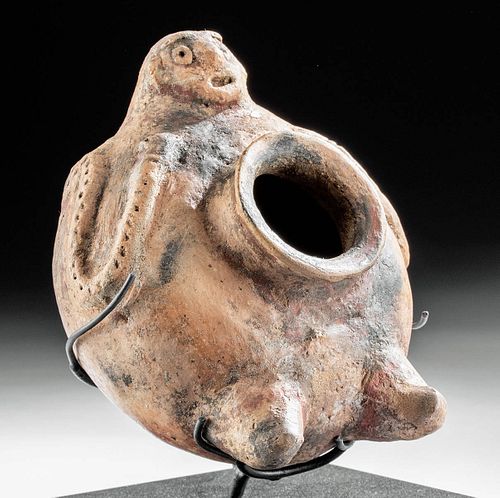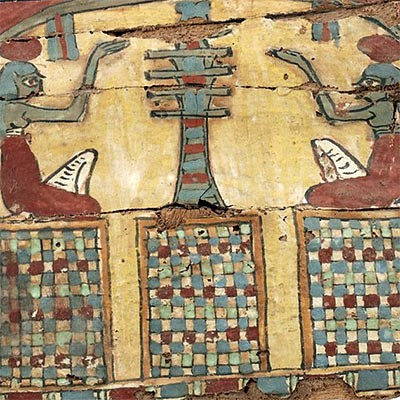Marajoara Terracotta Anthropomorphic Figure Vessel
Lot 116c
About Seller
Artemis Fine Arts
686 S Taylor Ave, Ste 106
Louisville, CO 80027
United States
Selling antiquities, ancient and ethnographic art online since 1993, Artemis Gallery specializes in Classical Antiquities (Egyptian, Greek, Roman, Near Eastern), Asian, Pre-Columbian, African / Tribal / Oceanographic art. Our extensive inventory includes pottery, stone, metal, wood, glass and textil...Read more
Estimate:
$2,400 - $3,600
Absentee vs Live bid
Two ways to bid:
- Leave a max absentee bid and the platform will bid on your behalf up to your maximum bid during the live auction.
- Bid live during the auction and your bids will be submitted real-time to the auctioneer.
Bid Increments
| Price | Bid Increment |
|---|---|
| $0 | $25 |
| $300 | $50 |
| $1,000 | $100 |
| $2,000 | $250 |
| $5,000 | $500 |
| $10,000 | $1,000 |
| $20,000 | $2,500 |
| $50,000 | $5,000 |
| $100,000 | $10,000 |
| $200,000 | $20,000 |
About Auction
By Artemis Fine Arts
Jul 30, 2020
Set Reminder
2020-07-30 10:00:00
2020-07-30 10:00:00
America/New_York
Bidsquare
Bidsquare : Ancient / Ethnographic From Around the World
https://www.bidsquare.com/auctions/artemis-gallery/ancient-ethnographic-from-around-the-world-5382
Ancient art from Egypt, Greece, Italy and the Near East, as well as Asian, Pre-Columbian, Native American, African / Tribal / Oceanic, Spanish Colonial, Russian Icons, Fine art, much more! All categories, all price ranges... all legally acquired and guaranteed to be as described or your money back. Artemis Fine Arts info@artemisfinearts.com
Ancient art from Egypt, Greece, Italy and the Near East, as well as Asian, Pre-Columbian, Native American, African / Tribal / Oceanic, Spanish Colonial, Russian Icons, Fine art, much more! All categories, all price ranges... all legally acquired and guaranteed to be as described or your money back. Artemis Fine Arts info@artemisfinearts.com
- Lot Description
Pre-Columbian, Brazil, Marajoara (also Marajo) culture, ca. 800 to 1400 CE. A hand-built pottery jar of an unusual anthropomorphic form with a round but stable base, a spherical body with a smooth shoulder, and a lightly corseted neckline beneath a flared rim. Protruding from the ends are either a pair of attenuated legs or an abstract head with circular eyes and a gaping mouth, and lengthy, sinuous arms course across one half of the shoulder and bear decorative impressed stippling. The exterior is covered with pale orange pigment, and areas of vibrant vermilion-hued color are visible on the head, body, legs, and rim. A unique and intriguing example of ancient Marajo pottery! Size: 6.1" L x 5.1" W x 3.8" H (15.5 cm x 13 cm x 9.7 cm); 6.9" H (17.5 cm) on included custom stand.
The Marajoara - also known as the Marajo - flourished on Marajo Island, in the mouth of the Amazon River. They built impressive mounds and lived subsistence lifestyles while producing stylistically unique, beautiful pottery like this. This was a large-scale civilization, contrary to what many European researchers believed of the Amazon before their discovery - the mounds ranged from 3 to 10 meters in height, and some sites cover more than 10 square kilometers and contain 20 to 30 individual mounds. Their figural pottery was mainly of females, representing roughly 70-90% of all known ceramic sculptures from the Marajoara and their neighbors the Santarem, which researchers believe indicates that chiefly descent came from a mythical female ancestor. During this period, both male and female figures are shown as shamans.
Provenance: private Hawaii, USA collection; ex-Eugene Lions collection, Switzerland, acquired before 1970
All items legal to buy/sell under U.S. Statute covering cultural patrimony Code 2600, CHAPTER 14, and are guaranteed to be as described or your money back.
A Certificate of Authenticity will accompany all winning bids.
We ship worldwide and handle all shipping in-house for your convenience.
#151859Professionally repaired from multiple pieces, with restoration along base and areas of body, and resurfacing and overpainting along new material and break lines. Minor chips and abrasions to base, body, head, limbs, and rim, with fading to original pigmentation, light encrustations, and softening to some finer details. Light earthen deposits and nice traces of original pigment throughout.Condition
- Shipping Info
-
All shipping is handled in-house for your convenience. Your invoice from Artemis Gallery will include shipping calculation instructions. If in doubt, please inquire BEFORE bidding for estimated shipping costs for individual items.
-
- Buyer's Premium



 EUR
EUR CAD
CAD AUD
AUD GBP
GBP MXN
MXN HKD
HKD CNY
CNY MYR
MYR SEK
SEK SGD
SGD CHF
CHF THB
THB














